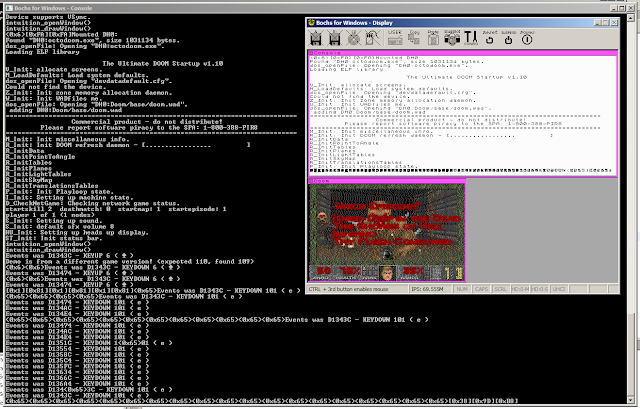Examining all the GIF89a specifications, I was surprised to find that GIF files can easily have more than 256 colours per frame, and the fact that most graphics tools limit files to 256 colours is because they're poor implementations of the standard. That said, there is a question on how many programs could correctly read and display such a GIF (mental note: test major browsers for support).
Opening the files and working through the general container format for the GIF files was no different to any other graphics file format, the two really interesting parts are the multiple images per frame (how you get more than 256 colours per file and optimise animations) and the LZW encoding for the images.
When dealing with GIF files, each file contains a number of logical "screens" which are animation frames (one for a static GIF, multiple for an animated GIF), then each "screen" is built up of one or more "images". Each image provides a part of the screen image, so you could tile multiple images to make up each screen (each frame of animation). Each image has a palette limit of 256 colours, so by tiling as many "images" as you need to make up each "screen" you can easily get more than 256 colour GIF files. Most files, however, only use a single "image" per "screen" and are therefore limited to 256 colours.
The LZW encoding is more intricate, and there is a lot of conflicting and incomplete information on exactly how you go about interpreting the data. Because of this, I'm not going to go into detail on this until my implementation is complete to the point of working with all of my test images. Be aware that a lot of code posted on the internet under the heading of "LZW Decoding" is actually the GIF-specific variant of LZW coding.
Because the graphics output is the same window-system method as Doom is using, all the output is already in-place and tested, as long as I can build an appropriate Bitmap structure from the image data, and I get dithering for free if required.
Such poking and frustration later ...
Yes it does animate, but you'll have to take my word on that for now. I could create an animated GIF of my OS playing an animated GIF for you all to enjoy, but not today (Yo dawg, I heard you like animated GIFs ...). You can still see the section of border to the left of the graphic is still being overwritten, that's the VGA driver blitting routing still not supporting masking correctly.
I have a host of other animated GIF images, including some simple ones that Leah made for testing, but not all of them work. Some of them run the system out of memory (it only has a few meg for the memory manager at the moment), some of them have LZW coded data that causes my LZW decoder to fail (still need to find out why).
At some point, the code for loading the GIF files (currently incorporated into the Hello World test app) will be extracted out and built into a class to be loaded by the codec system, a part of the OS I'm really looking forward to writing :)
One of the benefits of writing all your own window manager code, including the routine to draw the window chrome, is that I get to do things like this:
The Amiga Kickstart 1.3 window chrome faithfully reproduced, loading a GIF of the boot screen. I also coded in another font that's closer to the Workbench standard. It isn't Topaz, but it's close.
I'm very happy with that :)
(I think that's the last article I had to publish from before my three month break from development, hopefully I get to do some new stuff now.)



